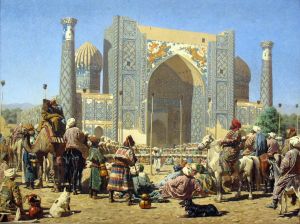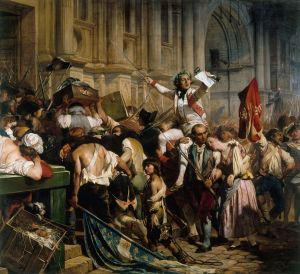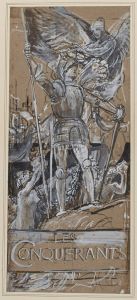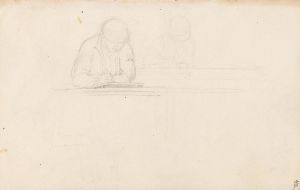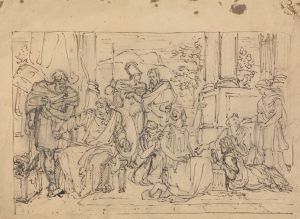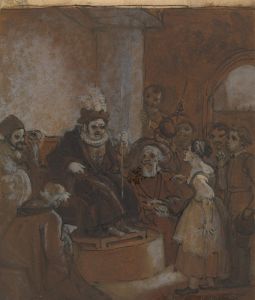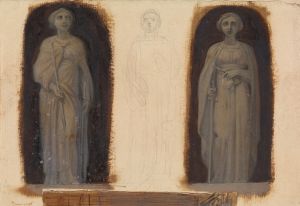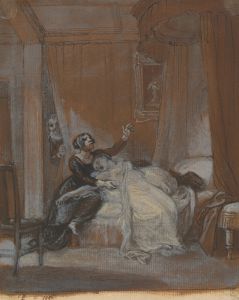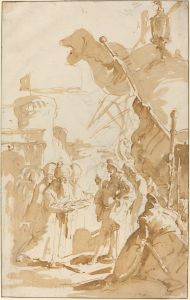
Allegorical Sketch of Victory
A hand-painted replica of Robert Smirke’s masterpiece Allegorical Sketch of Victory, meticulously crafted by professional artists to capture the true essence of the original. Each piece is created with museum-quality canvas and rare mineral pigments, carefully painted by experienced artists with delicate brushstrokes and rich, layered colors to perfectly recreate the texture of the original artwork. Unlike machine-printed reproductions, this hand-painted version brings the painting to life, infused with the artist’s emotions and skill in every stroke. Whether for personal collection or home decoration, it instantly elevates the artistic atmosphere of any space.
"Allegorical Sketch of Victory" is a painting by the British artist Robert Smirke, who was active during the late 18th and early 19th centuries. Smirke was known for his works in the neoclassical style and his contributions to book illustrations, particularly for editions of Shakespeare's plays.
The painting "Allegorical Sketch of Victory" is an example of Smirke's skill in creating allegorical and historical scenes. Allegorical art uses symbolic figures, actions, or representations to convey complex ideas and messages, often moral, political, or philosophical in nature. In this work, Smirke employs the figure of Victory, a common personification in art, to symbolize triumph and success.
Victory is typically depicted as a winged female figure, often holding a laurel wreath or palm branch, both symbols of victory and peace. In Smirke's sketch, Victory may be shown in a similar manner, embodying the classical ideals of beauty and strength. The use of allegory in this painting aligns with the neoclassical movement's emphasis on classical themes and motifs, drawing inspiration from ancient Greek and Roman art and literature.
Robert Smirke's career included membership in the Royal Academy of Arts, where he exhibited his works regularly. His paintings often featured literary and historical subjects, reflecting the intellectual currents of his time. Smirke's ability to blend narrative content with classical aesthetics made his works popular among contemporary audiences.
"Allegorical Sketch of Victory" would have been created during a period when Britain was engaged in various military conflicts, including the Napoleonic Wars. Artworks celebrating victory and heroism were common, serving both as patriotic propaganda and as a means of boosting public morale. Smirke's painting fits within this context, offering a visual representation of triumph that would resonate with viewers of his era.
The exact date of the creation of "Allegorical Sketch of Victory" is not specified, but it would likely have been produced during Smirke's active years as an artist, which spanned from the late 18th century until his death in 1845. The painting's current location or ownership is not detailed in available records, and it may reside in a private collection or be part of a museum's holdings.
In summary, "Allegorical Sketch of Victory" by Robert Smirke is a neoclassical painting that uses the figure of Victory to symbolize triumph. Smirke's work reflects the artistic and cultural values of his time, drawing on classical themes to convey messages of success and heroism. While specific details about the painting's creation and current whereabouts are limited, it remains an example of Smirke's contribution to allegorical and historical art.





